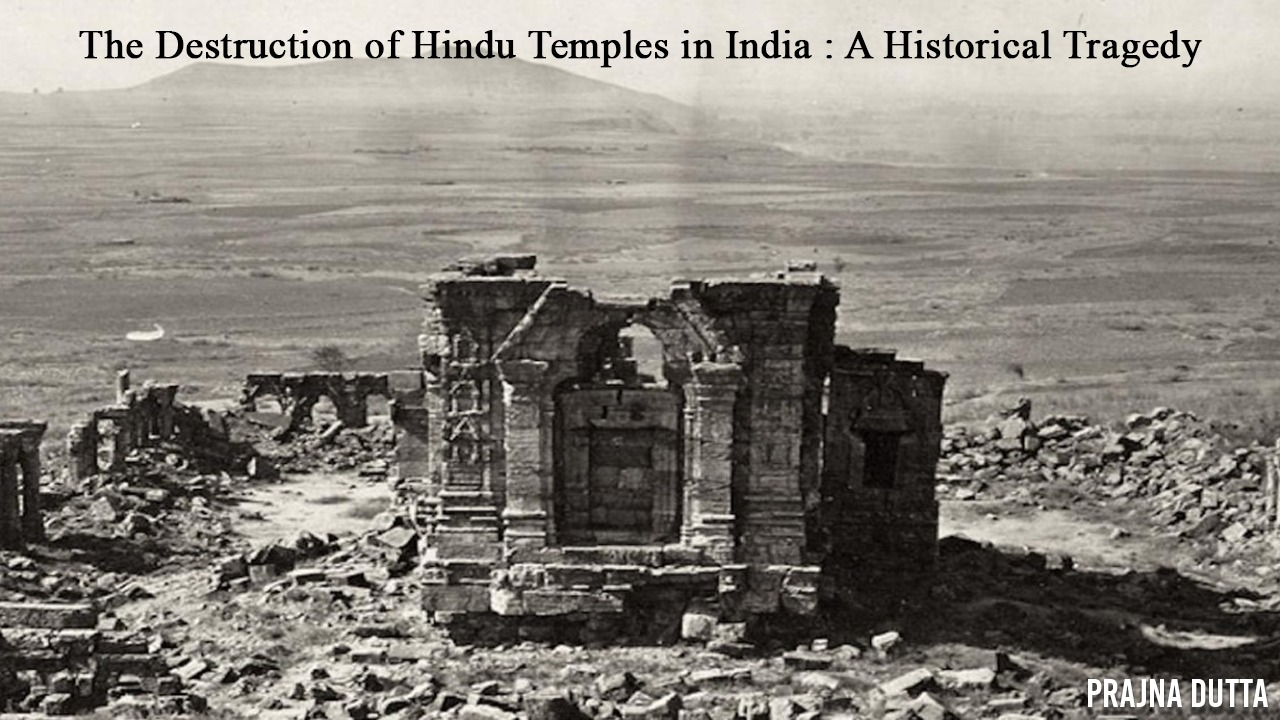Introduction
The historical landscape of India is dotted with magnificent Hindu temples that stand as testaments to the country's rich cultural and religious heritage. However, throughout history, many of these sacred sites have been subject to destruction and desecration by invading forces. The destruction of Hindu temples in India is a tragic chapter in the country's past, marked by religious intolerance, cultural vandalism, and the loss of invaluable artistic and architectural treasures.
Ancient and Medieval Period
The earliest recorded instances of Hindu temple destruction date back to the invasions of India by foreign powers such as the Greeks, Persians, and Central Asian nomadic tribes. However, it was during the medieval period, particularly under the rule of Islamic dynasties, that the systematic destruction of Hindu temples reached its peak.
One of the most notorious episodes of temple destruction occurred during the reign of Mahmud of Ghazni, a ruler of the Ghaznavid Empire. Mahmud's frequent incursions into India between the 10th and 11th centuries resulted in the looting and demolition of numerous Hindu temples, most notably the iconic Somnath Temple in Gujarat.
The Delhi Sultanate and later the Mughal Empire continued this pattern of desecration and destruction of Hindu temples. Iconoclastic policies, such as the imposition of jizya (tax on non-Muslims) and the destruction of Hindu idols, were part of a broader campaign to subjugate and marginalize the Hindu population.
Colonial Era and Beyond
The arrival of European colonial powers in India further exacerbated the plight of Hindu temples. While the British East India Company and subsequent British colonial administration did not engage in widespread temple destruction, their policies and actions often disregarded the religious and cultural sensitivities of the local population.
Moreover, the neglect and lack of protection afforded to many ancient temples during this period led to their gradual decay and dilapidation. The appropriation of temple lands and resources by colonial authorities also had a detrimental impact on the preservation of these sacred sites.
Contemporary Challenges
In modern times, the destruction of Hindu temples in India has taken on new forms. While the overt acts of temple desecration have significantly declined, challenges such as encroachment, neglect, and insufficient conservation efforts continue to threaten the integrity and preservation of historic temples.
Additionally, instances of communal tension and violence have occasionally led to the vandalization and destruction of temples, often as a result of inter-religious conflicts or political turmoil.
Preservation and Restoration Efforts
Efforts to preserve and restore Hindu temples in India have gained momentum in recent decades. Government agencies, non-governmental organizations, and heritage conservation groups have been actively involved in initiatives aimed at safeguarding these architectural marvels.
Legislation such as the Ancient Monuments and Archaeological Sites and Remains Act of 1958 provides legal protection to designated historic sites, including Hindu temples. Furthermore, awareness campaigns, community involvement, and international collaboration have contributed to the conservation and restoration of numerous temples across the country.
Conclusion
The destruction of Hindu temples in India represents a painful legacy of religious intolerance and cultural upheaval. While the wounds inflicted by historical invasions and neglect cannot be erased, ongoing efforts to preserve, protect, and celebrate the heritage of these temples signify a renewed commitment to honoring India's diverse religious and cultural tapestry.
By acknowledging the significance of Hindu temples as repositories of art, spirituality, and history , India can strive to ensure their continued existence for future generations. It is essential to recognize the intrinsic value of these temples as not only religious landmarks but also as architectural wonders that embody the artistic and engineering achievements of their respective eras.
Moreover, promoting interfaith dialogue and fostering a climate of mutual respect and understanding can help mitigate the risk of further acts of vandalism or destruction directed at Hindu temples. Embracing India's pluralistic heritage and acknowledging the contributions of all religious communities to the country's cultural mosaic is crucial in nurturing a society where such acts of desecration are universally condemned.
In conclusion, the destruction of Hindu temples in India stands as a poignant reminder of the fragility of cultural heritage in the face of religious and political turmoil. While the scars of the past cannot be erased, concerted efforts to safeguard and celebrate these architectural marvels can serve as a beacon of hope for the preservation of India's rich cultural legacy. By recognizing the historical significance of Hindu temples and the imperative of protecting them, India can uphold its commitment to preserving the tapestry of its diverse religious and cultural traditions.

Comments